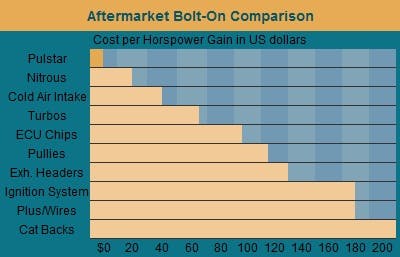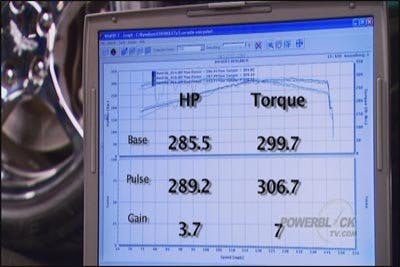 From your family lawn mower to that roaring V8, gasoline fed combustion engines have several things in common, one of which is the use of spark plugs. Introduced in simplistic form as early as the 1880s, spark plugs are the very threads that hold the combustion system together and makes its functionality possible. With very limited changes in function since the early days of the combustion component, traditional spark plugs have one limitation – the power that the plug’s spark produces is frozen in time. That’s where the technology of pulse plugs, marketed famously under the company Pulstar, go above and beyond. Let’s take a look at how the Pulstar plug works.
From your family lawn mower to that roaring V8, gasoline fed combustion engines have several things in common, one of which is the use of spark plugs. Introduced in simplistic form as early as the 1880s, spark plugs are the very threads that hold the combustion system together and makes its functionality possible. With very limited changes in function since the early days of the combustion component, traditional spark plugs have one limitation – the power that the plug’s spark produces is frozen in time. That’s where the technology of pulse plugs, marketed famously under the company Pulstar, go above and beyond. Let’s take a look at how the Pulstar plug works.
 In order to see the benefits that Pulstar pulse plugs bring to your vehicle, you must understand the basics of a spark plug. For this we looked to Pulstar themselves and a very informative piece called “The Ubiquitous Spark Plug.” Laid out to include several different topic areas, this piece explains the historical development of spark plugs.
In order to see the benefits that Pulstar pulse plugs bring to your vehicle, you must understand the basics of a spark plug. For this we looked to Pulstar themselves and a very informative piece called “The Ubiquitous Spark Plug.” Laid out to include several different topic areas, this piece explains the historical development of spark plugs.
While over the years spark plugs have seen various upgrades, such as the addition of gold and silver for better conductivity, changes in electrode makeup for improved durability, and numbers of electrode design changes, the very essence of the spark plug remains the same.
At the top of the plug, you’ll find a terminal attached to a conductor, which is set inside insulation. The terminal is where your plug attaches to the plug wire in your engine bay. The conductor then leads down to the plug’s resistor, which is capped off by a gas seal and an electrode at the bottom. At the end of the electrode is a heat range cone that is topped off with a ground strap. This is where you adjust your spark plug’s gap and also where the plug’s spark is produced.

When an engine is running, its pistons travel down the cylinders, pulling in an air/fuel mixture. When the piston goes back up, it compresses this mixture at the ground strap of the spark plug.
Ideally, once the piston is at its highest point, the spark plug will spark sending the firing power across the gap between the ground strap and the electrode. This spark then ignites the air/fuel mixture. The piston is then forced back down, providing power for your engine.
While the design of the Pulstar pulse plug is very similar to a traditional spark plug, the advancement of these plugs comes in the form of a built-in capacitor between the resistor and the gas seal. What this does is store electrical energy from your engine’s ignition coil. This energy is then released in a powerful, two nanosecond pulse at the exact second the plug sparks, burning fuel quickly and smoothly.

With some limitations in the traditional spark plug design, pulse plugs are a definite advancement to an otherwise dormant technology, capturing energy that other plugs may waste.
There’s little doubt that traditional spark plugs are to credit for Pulstar’s engineering efforts to improve an age-old combustion component, but with products like pulse plugs on the market, there’s just no excuse for not trying some new spark technology with the modern engines and fuels.
You might also like
SEMA 2025: The Reimagined Chevelle 70/SS Steals The Big Show
Trans Am Worldwide revives the 1970 Chevelle with the modern 70/SS. The limited-run supercar drew huge crowds at SEMA 2025.


